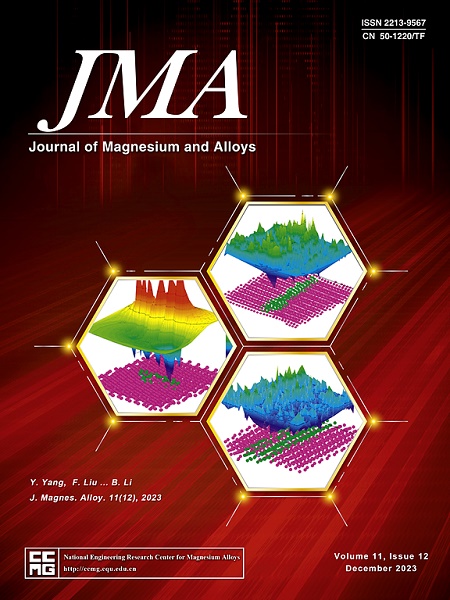Spatial mapping of the localized corrosion behavior of a magnesium alloy AZ31B tungsten inert gas weld
IF 15.8
1区 材料科学
Q1 METALLURGY & METALLURGICAL ENGINEERING
引用次数: 0
Abstract
Sections of a magnesium alloy, AZ31B, joined with tungsten inert gas (TIG) welding, were examined with scanning electrochemical microscopy (SECM) and scanning Kelvin probe force microscopy (SKPFM) to investigate corrosion mechanisms by correlating observed corrosion behavior with weld-affected microstructural variations. Insight into the changing nature of the galvanic couples between weld zones and at localized microgalvanic sites were investigated using SECM and SKPFM to map both electrochemically active regions and Volta potential differences across the weld-affected zones. The formation of an Al-Zn solidification network in the fusion zone (FZ) at and near the TIG weld epicenter differs from the outer heat-affected zone (HAZ), where intermetallic particles (IMPs) are the notable secondary phase from the magnesium matrix. These microstructures were mapped with SKPFM before and after brief exposure to a salt solution, revealing micro-galvanic couples as the main driving force to corrosion initiation and propagation within each zone. The IMPs and Al-Zn solidification network act as strong cathodes and govern the corrosion processes. The galvanic coupling and evolution of the intrinsic corrosion behavior between the weld zones is explained by monitoring the hydrogen evolution reaction (HER) with SECM over time. Anodically induced cathodic activation is confirmed for this welded material, as micro-galvanic couples between microstructural features are found to transition over time to broad electrochemically active areas within the weld-affected zones, resulting in polarity reversal as time of exposure proceeds.
求助全文
约1分钟内获得全文
求助全文
来源期刊

Journal of Magnesium and Alloys
Engineering-Mechanics of Materials
CiteScore
20.20
自引率
14.80%
发文量
52
审稿时长
59 days
期刊介绍:
The Journal of Magnesium and Alloys serves as a global platform for both theoretical and experimental studies in magnesium science and engineering. It welcomes submissions investigating various scientific and engineering factors impacting the metallurgy, processing, microstructure, properties, and applications of magnesium and alloys. The journal covers all aspects of magnesium and alloy research, including raw materials, alloy casting, extrusion and deformation, corrosion and surface treatment, joining and machining, simulation and modeling, microstructure evolution and mechanical properties, new alloy development, magnesium-based composites, bio-materials and energy materials, applications, and recycling.
 求助内容:
求助内容: 应助结果提醒方式:
应助结果提醒方式:


